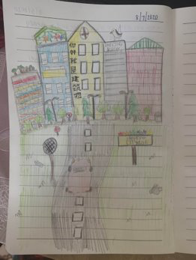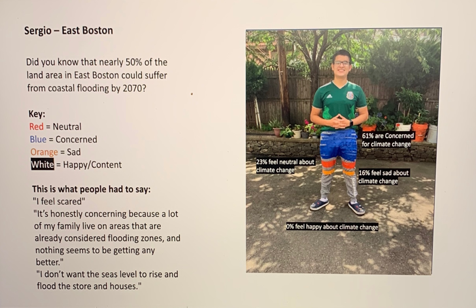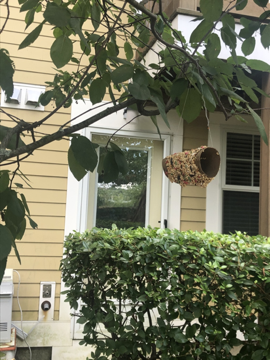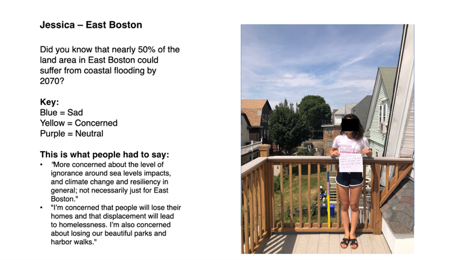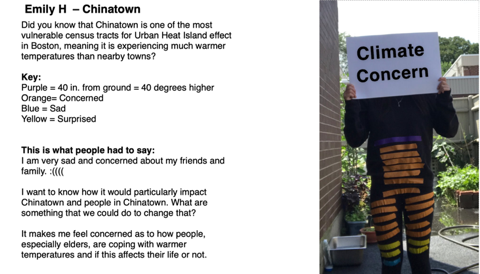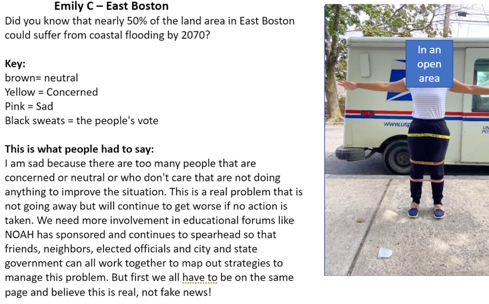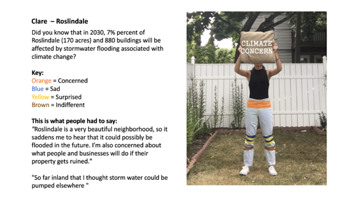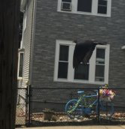'Climate Concern'—Boston teens visualize climate change impacts in their own neighborhoods | Waterfront Ambassadors Photo Diary
A virtual tour kicked off the second-to-last week for the Waterfront Ambassadors, with a presentation from Harborkeepers Executive Director Magdalena Ayed about Vision Chelsea Creek. This project is a six-month long visioning, planning and engagement process to re-imagine an abandoned railway site along the industrial shoreline of Lower Chelsea Creek in East Boston.
“Though we all wished we could be there in person, it was very cool to see the creek from her perspective as someone with so much knowledge and passion for the area,” said Program Manager Sarah Plotkin. “Magdalena also joined us again on Thursday to get the Ambassador's feedback as youth leaders on certain aspects of the Vision Chelsea Creek Project. Since many of our Ambassadors live near the site in East Boston and Chelsea it was a great opportunity for them to share their opinions as locals and people who will be affected by the project.”
The teens also had the opportunity to attend a virtual panel of landscape architecture students and recent grads hosted by Daniela Coray, Interim Coordinator of Course Instruction and Assistant Faculty at the Boston Architectural College School of Landscape Architecture. By mid-week the Ambassadors had the chance to present on their own, with an end-of-summer event.
Over a Zoom presentation attended by Trustees staff, partners, and others interested in the group’s work, the Ambassadors spoke about the organizations and individuals they worked with this summer, their engagement project, and what they have learned from the work.
“This was followed by a Q&A portion, and attendees were eager to learn more about the Ambassadors' recommendations for how to best reach out to youth and get their opinions and feedback for future engagement projects,” explained Plotkin. “The event was a huge success and showed off the public speaking and leadership skills that the Ambassadors have been practicing all summer.”
The week wrapped with a final session with Carolina Aragón, local artist and UMass-Amherst Landscape Architecture and Regional Planning Assistant Professor, as the Ambassadors finalized their art installation project, “Climate Concern.” Using data collected through surveys distributed to people in their neighborhoods, the Ambassadors were able to give a visual sense of the effects of climate change in each of their neighborhoods.
“The Ambassadors said they really enjoyed learning more about how climate change will affect their local community, and gaining a better understanding of their community's perspective on it,” said Plotkin. “They also had a great time setting up and taking pictures of their art installations!”
In this week’s photo diary, see some of the Ambassador art installations, plus crafted backyard birdhouses, and drawings of reimagined public spaces.
Sophia T: This week we did a scavenger hunt by sending lists to each other and either finding them in our neighborhood or drawing them in a picture of our made-up city. I decided to draw Cityville, which is a city that is inspired by Chinatown and its unique features. This activity has made me notice all the small things that make up Chinatown and notice that things used to just walk by thinking it was something that is in all neighborhoods was actually something unique to Chinatown.
Sergio F: This week we presented our project called Climate Concern where I was representing climate change in East Boston and showing that 50% of my body would be affected by coastal flooding in the next 50 years. Also, the different colors represented the different emotions community members felt about flooding in East Boston. Overall, the majority of people felt concerned for climate change and my hope with this is to bring more light to the idea that climate change is an urgent issue that will not go away and we all must tackle this head first.
Rabab B: This week we created bird feeders. There aren't really that many in my neighborhood. I created a simple one, using a toilet paper roll covered in honey, with seeds stuck to it. Then I hung on this on a tree, and I watched the birds eat happily.
Kevin C: This week for an outside activity we were challenged to make bird feeders. So, I created one for the birds in my backyard so they are able to eat seeds. I also thought it would be good for the birds since I haven't seen any other bird feeders in my neighborhood.
Jessica Z: This week, we were tasked with showing the rise of ocean levels and how local residents feel about it through the use of colored tape and paper. I took the data results from how people felt and made it so that yellow represented concern, purple represented neutral, and blue represented sad. Then, I measured the tape so that the total height of the tapes combined would represent the approximate rise of the ocean within the next few decades. This project communicates a very powerful message and I feel more knowledgeable about the dangers of climate change and sea level rise, and how it can affect my neighborhood.
Gloriann Z: One of this week’s activities was challenging each other to find a list of items created by a peer in our neighborhood. I found this mural which was in a Chinatown parking lot. I don’t think many people would stop and admire the art but rather just pass by it. There are many art styles shown in Chinatown but they are very underrated.
Emily H: We worked with Carolina and Claudia on a public art project concerning climate change in our neighborhoods, and I really enjoyed the aspect of making public art in the comfort of our own homes. Although I do not live in Chinatown, it is one of the most meaningful towns in Boston that represents my childhood and culture. I think putting on the tape was definitely a struggle, but the results came out great as it was able to depict how many people were concerned with the rising temperatures in Chinatown.
Emily D: This week we did two bird related activities. The first one was bird watching and identifying. The second was making bird feeders. I loved this activity because it challenged me to find things to use. I found some plastic containers and started. I began stacking them and used a dixie cup. I poked some holes in the top container and added a large popsicle stick for the birds to stand on. I then mixed cereal, granola bars and pound cake and smashed it all up. After the food was done, I simply put a fake flower for decoration and then put it outside for the birds!
Emily C: This week, we were able to finish our project with Carolina. We have been working on surveys based on our neighborhood and sending it out to people around our neighborhood to understand their thoughts and feelings about climate change in our areas. As results of the survey came in, it was interesting to see what people felt about climate change, there was more people that were concerned rather than neutral, sad, or happy. Given this data, we did a project to show the results of the survey but being very creative with it. People either taped themselves to show the results of the survey or taped the wall. I enjoyed this because I was able to understand people’s thoughts and feelings about climate change and now a lot of people are more aware it.
Clare A: This week we finalized our project with Carolina Aragon and I was so excited as I became more reflective on myself and the actions that are taken/not taken in my neighborhood to address climate change. The Climate Concern project helped me to better understand my community's concerns, and that is what drives me to do more for it. Many people in Roslindale were not aware of the stormwater flooding issues that would occur in the next few years, thinking that our town is too far inland, but it really isn’t. The same goes for the other neighborhoods I’ve heard from, who are even more affected by waterfront issues and heat. It is time for our generation to be the change we want to see in the world.
Brittany R: On our scavenger hunt, we were challenged to look for different things around our neighborhood. I was able to capture two things in one picture, a black pigeon and a blue bike. The coincidence struck me. Searching through my neighborhood for random items was a fun exercise and allowed me to look at details that I have never noticed before. Every neighborhood is beautiful and has many things to offer, we just don’t notice them sometimes. These scavenger hunts are an easy and fun way to appreciate your neighborhood for what it. I’m glad I had this experience.
To see more blogs from the 2020 Ambassadors, click here. To read blogs from the 2019 program, click here.

